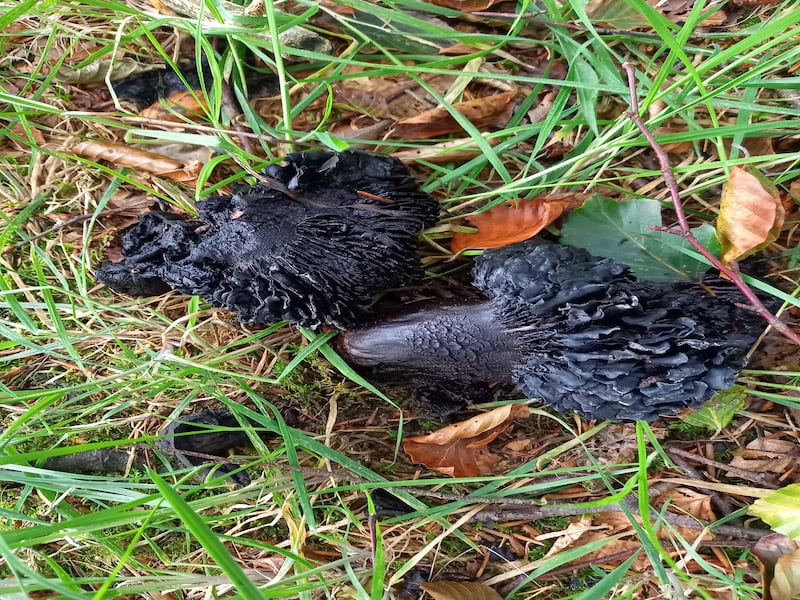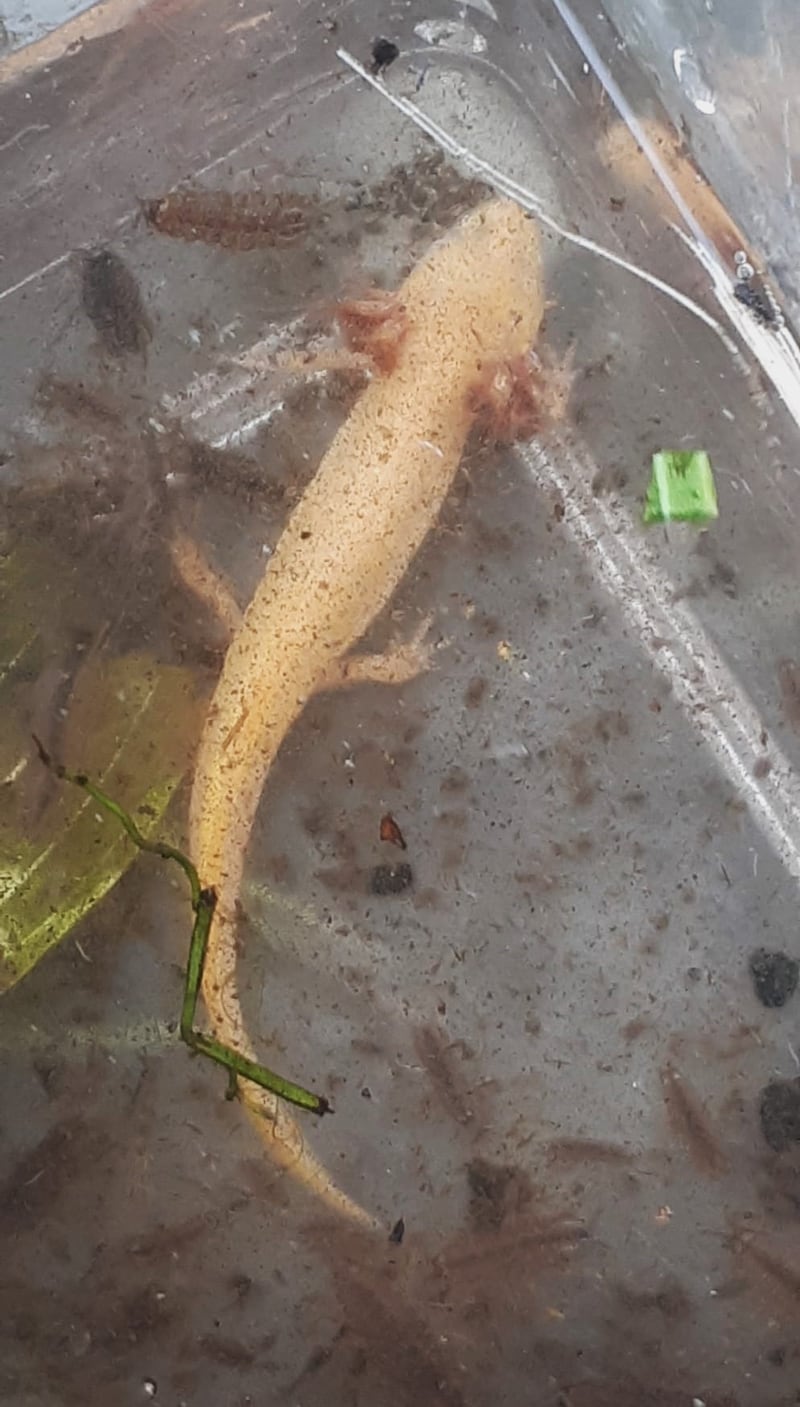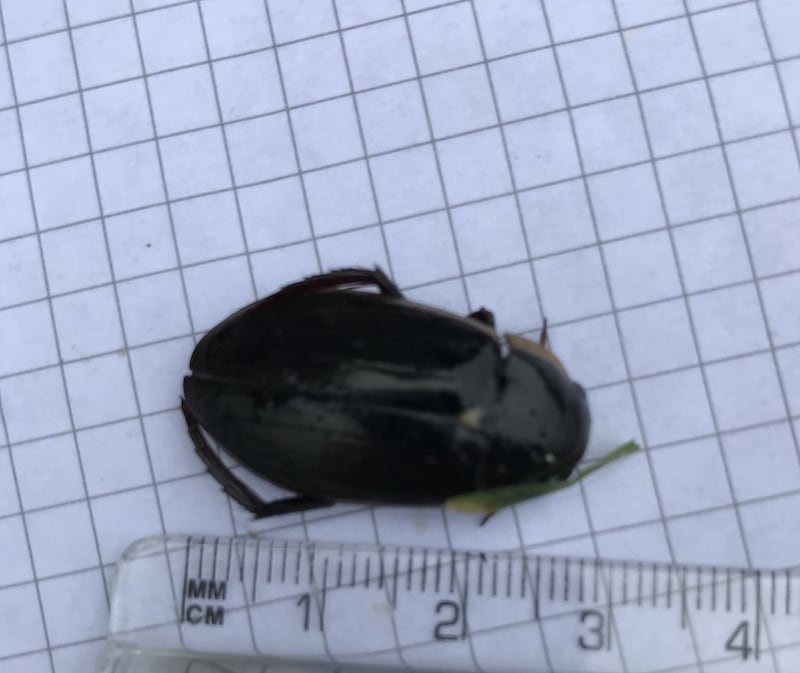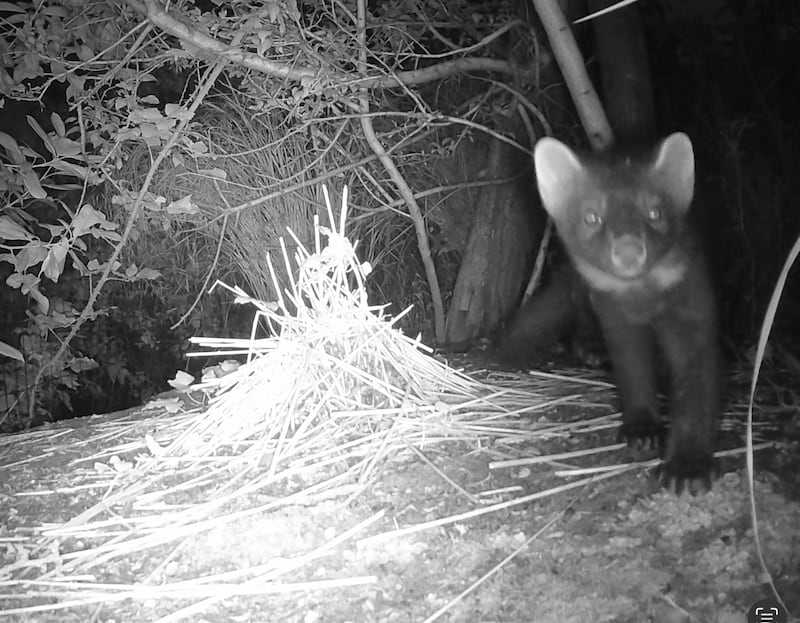Eye on Nature
I came across this big, damaged seabird that couldn’t move during a walk on Ballyhiernan beach. Can you identify it for me?
Carl Rainey, Co Donegal
It is a juvenile gannet, not long out of the nest, and it probably was a victim of bird flu. Unfortunately, many hundreds, perhaps thousands, of gannets have perished due to this disease around the Irish coast over the past year. Gannets begin to breed at the age of four, so it will take perhaps four years before the impact of bird flu on our gannet population becomes fully apparent. Never touch ill or dying sea birds.
RM Block
I saw this fungus in a small wood near Fenor Bog. I’ve never seen anything like it before...
Eithne O’Callaghan, Co Waterford

This is Russula nigricans, the Blackening Brittlegill Mushroom. The caps, which can be very large (up to 25 cm), are initially a dirty white to grey-brown colour. On bruising, the flesh at first reddens and later turns black due to melanin production. As the caps age they become totally black/charred-looking – and rot very slowly. The gills are very distant, thick but fragile. The species is widespread and commonly found from late summer to early autumn. It is known to form fairy rings.
[ The Viviparous lizard is our only native reptile – Readers’ nature queriesOpens in new window ]
I saw this newt in Dun Chaoin recently. I had never seen a newt like this before.
A nic an tSithigh, Co Kerry

This is a native smooth newt which is in a state of partial neoteny. This means it has not completed the metamorphosis from a tadpole to an adult. It has developed its tail, back legs and front legs, but has retained the gills of the tadpole stage. This condition seems to be associated with a malfunction of the thyroid gland and may be associated with a high concentration of organic matter in the water. This specimen also seems to be an albino, as it has a cream-coloured skin. There has only been one previous Irish record – from Macroom.
I found this fella skipping across my lawn recently. Its size surprised me. I’ve never seen a bug this big in Ireland before.
Joe Cantwell

It is not a bug – it is a water beetle, one of our very largest ones, Dystiscus, the great diving beetle. It is a fierce carnivore and will eat all the other creatures in a garden pond, including tadpoles and small fish. It lays its eggs on water plants. The larvae, when grown, dig a tunnel on the bank and here pupate into an adult. They then must return to the water. Your one seems to have taken a wrong turning.
[ How did this spider manage to hold on to and kill a much larger butterfly?Opens in new window ]
Visitors are entering my potatoes through a 5mm tunnel and are creating a dirty mess. What are they – and how can I move them on?
Michael McGreal, Co Roscommon

Your visitors are wireworms, pests of potato tubers. They are the larvae of the click beetle, so called because of the audible click sounded when the adults flick themselves upright after falling on their backs. The wireworm larvae bore holes, usually lined with potato skins, into the tubers. Skip growing potatoes for a year or two to starve out the pests from the soil. Or grow early potatoes instead.
This beautiful creature emerged from the banks of the Royal Canal one evening recently. What is it?
Liam Regan, Co Dublin

This is a pine marten, an arboreal native mammal which is mainly nocturnal. It is the natural enemy of squirrels, and so our native red squirrel is instinctively very wary of it. The invasive grey squirrel, being an American species, has no natural fear of it, so their numbers decline when pine martens are about.
Please submit your nature query, observation, or photo with a location, via irishtimes.com/eyeonnature




















